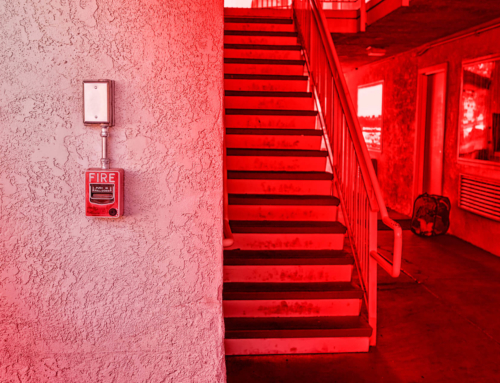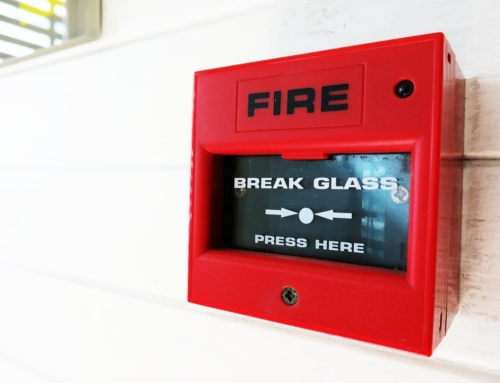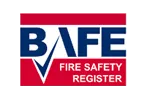Most buildings have multiple fire safety measures in place, requiring regular checks as part of your fire risk assessment schedule. But did you know this should include fire door inspections? These crucial checks look at everything from how to stop fire and smoke spreading to safe escape routes.
Here’s why regular fire door assessments are so important.
Why are fire doors necessary?
Fire doors are one of the most essential parts of a building’s passive protection from the risks of smoke and fire. They have a special design compared to conventional doors, with features built-in to slow down and resist the spread of smoke and fire for at least thirty minutes (but often longer!).
The goal of any fire door is to compartmentalise sections of a property (e.g., shared flats) or building (e.g., offices) should a fire occur. This gives occupants more time to evacuate safely while limiting the destruction caused. Reinforced with materials like steel and glass, they also have components such as fire-resistant hinges (with a higher melting point) and high-quality smoke seals.
Where are fire doors installed?
So where should fire doors be fitted? It depends on the building and occupants. At a site like a shared apartment building, you can usually find fire doors at entrances, stairwells, sub-dividing corridors, kitchens and plant rooms. This type of installation will usually have a fire door sign on it with safety instructions. For example, fire doors have self-closing mechanisms, so it’s vital they’re not pinned open by something heavy.
Are fire door inspections a legal requirement?
The Fire Safety (England) Regulations 2022 were updated to reflect the duties of building managers or property owners under the Fire Safety Order. This means ‘Responsible Persons’ should schedule regular fire door inspections. Failure to comply with these laws can lead to receiving large fines or even imprisonment if something catastrophic happens as the result of unchecked faulty fire doors.
How are fire doors checked?
During fire door surveys, a competent assessor should methodically check all the features present. This includes self-closing devices, clear fire door signage and smoke seals. They’ll also inspect for any signs of damage or repairs needed.
Other fire door features assessed includes the frame, door leaves and hinges, ensuring everything remains intact, securely attached and working as expected. Gaps around the door will be measured to see if they’re within the advised limits.
Can faulty fire doors be fixed?
Yes! However, you should act fast to rectify the issues and get fire safety back on track. Common fire door repairs include replacement smoke seals, hinge adjustments or new fire door signs. If there’s significant damage or deterioration (like severely warped frames), new fire doors may be needed.
All fire door assessments and repair work need to be clearly documented and kept in your records. This proves you’ve had the required fire risk assessments and taken corrective action when necessary.
Always have a record of your next fire door re-inspection date.
Book a fire door risk assessment in London, Surrey and the South East
MD Bespoke Solutions offers fire door checks and fire risk assessments in London and the South East, coming out to Berkshire, Clapham and beyond. For a free quote, contact us now.





















